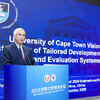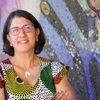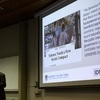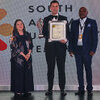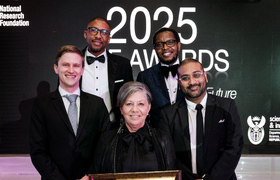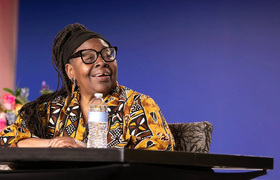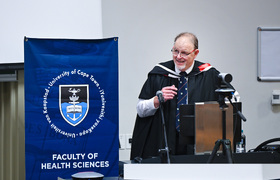Strengthening language, writing in higher education
19 August 2025 | Story Kamva Somdyala. Photos Lerato Maduna. Read time 4 min.
Institutions, where language and writing are concerned, must recognise and harness the rich resources students already possess, rather than second-guess them. This is the view of the University of Cape Town’s (UCT) Writing Centre head, Professor Arlene Archer.
On 12 August, Professor Archer, with the Centre for Higher Education Development (CHED), presented her inaugural lecture, “Critical access to higher education: A multimodal approach to academic literacies”. The lecture reflected deeply on 26 years of experience at UCT’s Writing Centre and set out to examine how students traverse dominant academic genres while incorporating their ways of knowing.
“The Writing Centre is a process-orientated space which fosters multiple styles and perspectives in writers. To provide access to academia while drawing on student resources, I combine my research and work to two theoretical approaches; the one is multimodality, and the other is academic literacies,” said Archer.
She explored how language and writing continue to shape access, inclusion and exclusion in higher education, particularly in the context of South Africa’s unequal educational system. Archer asserted that universities must move away from decontextualised models of student support that frame students as deficient.

“New literacy studies see this idea as attempting to give a social practice account of literacy which sees literacy as socio-situated but also contested. This approach helps us explore notions of reading and writing which emerge from our current technological and social changes. We all know producing a text in the written mode can be a stumbling block for some students and in South Africa we know many write in a language that is often not their own and they have to adopt disciplines for specific discourses as well.”
She added: “So, a multimodal approach enables a curriculum design which can draw on a full range of students’ resources. This is really important, as forms of representation are closely linked to forms of subjectivity, identity and personality.”
She shared an example of a project she was involved in with an engineering course, in which she hoped to set up a dialogue between what students bring and what the institution expects to evolve on a reciprocal curriculum. “The aim was to introduce certain topics around development and landscapes and context. It began by looking at symbols and everyday objects and using these as resources for teaching and learning,” she explained.
“This was because I saw everyday objects as catalysts for enabling students’ narratives to emerge. Students had to choose an everyday object and produce a text from that which discusses the symbolic and social meanings attached to it. The objects chosen often explored tensions between convention and change, class, cultural groupings and modernity and tradition. This in turn allowed for a rich exchange of cultural and personal knowledge in the classroom.”
Commitment to the space
Archer continued: “Academic argument is often produced through negation and opposition. It’s a cultural, textual form that produces difference rather than closure. In other words, it produces ambiguity, is an extension of thought and sometimes a shift of values.”
“These are just four ways of organising knowledge in argument: arguing through narrative, through induction, comparison of differences and similarities and lastly, through contrast. All these may sound theoretical, but they have very practical outcomes.”
The question becomes how these work in assessment? Archer clarified: “Assessment needs to be seen in relation to recognition. So, instead of dismissing what students do as wrong or an error, we need to think about what they are doing and what principles students are applying.”
The Writing Centre is the perfect place to harness that way of thinking. “Writing centres are interesting spaces, empty of fixed content and the commitment is to the space and as a result we contribute as change agents to dominant attitudes to language and culture,” Archer concluded.
 This work is licensed under a Creative Commons Attribution-NoDerivatives 4.0 International License.
This work is licensed under a Creative Commons Attribution-NoDerivatives 4.0 International License.
Please view the republishing articles page for more information.


